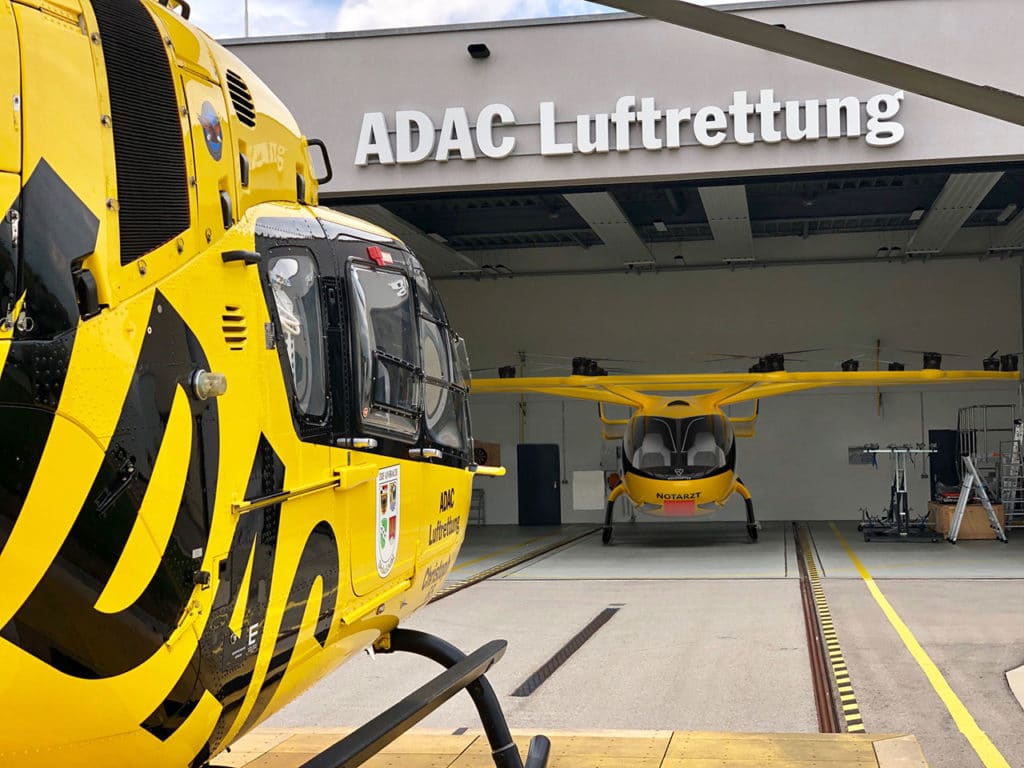The world’s first feasibility study using Volocopter’s VoloCity multirotor electric air taxi in rescue services has concluded that air rescue with piloted multicopters is possible, makes sense, and improves the emergency medical care of the population.
The research was conducted by the ADAC Luftrettung aerial rescue service and sponsored by the non-profit ADAC Foundation. Their aim was to determine whether the rescue service system could be improved and made future-proof by using multicopters as transport for emergency doctors. Based on the extensive study, the German traffic organization ADAC Luftrettung is now looking to begin operational testing in 2023.
To this end, these aircrafts have flown for almost one and a half years at regions Ansbach-Dinkelsbühl in the German state of Bavaria and in Idar-Oberstein in Rhineland-Palatinate with a pilot and an emergency doctor on board. The team from the Ludwig Maximilian University’s Institute of Emergency Medicine and Medical Management in Munich used historical data from the Rescue Coordination Center to create computer simulations of more than 26,000 emergency operations with multicopters.

The study concluded that significant improvements in emergency care were shown for an operational radius of between 25 and 30 km (15.5-18.6 miles). In this case, the optimal flight speed of the multirotor should be between 100 and 150 km/h (62 and 93 mph) with a minimum range of approx 150 km (93 miles). These ideal conditions would be technically possible in about four years.
“The work of the project participants is very impressive. Today we are convinced that multicopters can help shape and improve future rescue services. The results are so promising that they will pursue operational testing of the project,” announced Frédéric Bruder, Managing Director of the non-profit ADAC Luftrettung.

Used as the technical reference for the study, the 900 kg VoloCity is powered by eighteen two-blade rotors that draw power from nine swappable lithium-ion battery packs. The maximum payload of 200 kg will limit the aircraft to two passengers for most operations. The flying taxi has a range of 35 km (22 miles) per charge and a top speed of 110 km/h (68 mph). The manned version needs to be weight-optimized to safely transport both emergency doctors and specialized equipment if needed.
The researchers calculated that eVTOL could reach emergency care twice as fast as a ground vehicle and serve 2-3 times as many patients. Since emergency patients depend on the safe and quick arrival of the emergency doctor, multicopters must be able to operate in the rescue service 24 hours a day and even in bad weather, according to the study. Although designed to work with today’s air-emergencies, multi-wing electric helicopters could improve the efficiency of this service in the future.
“Fifty years ago, the ADAC was one of the first in Germany to test the use of rescue helicopters in a field trial. So, it is only logical that today we are the first to lead the air rescue sector in Germany into the future with new technologies,” says Frédéric Bruder.
